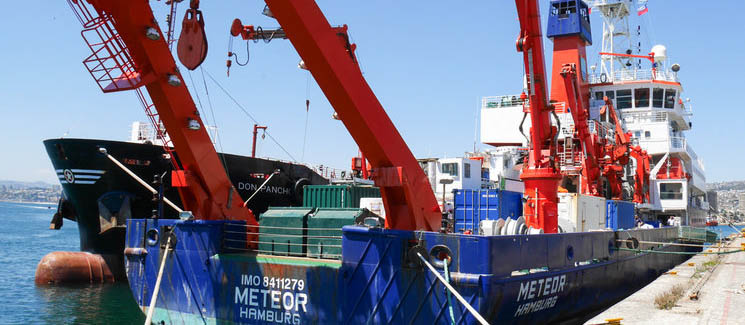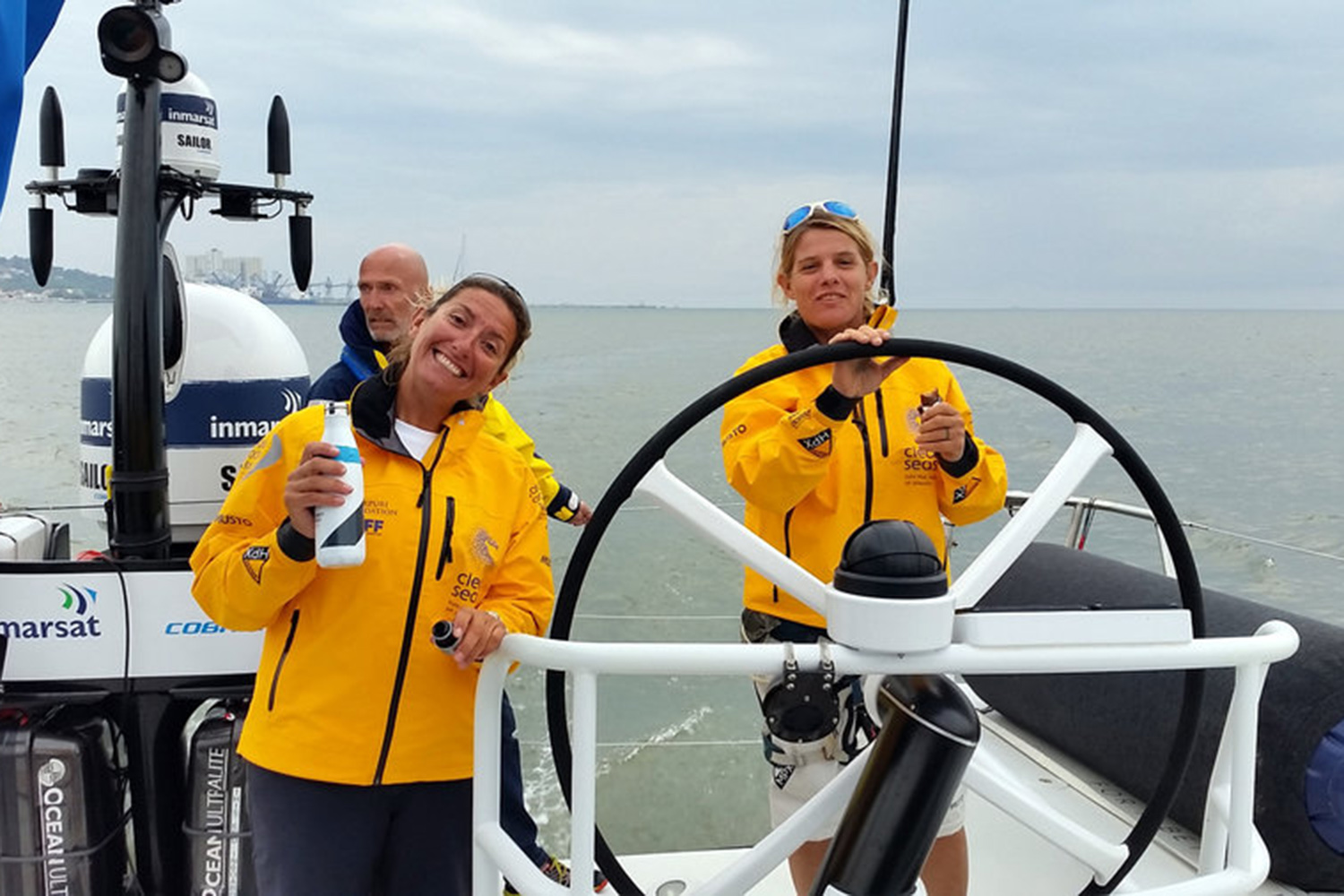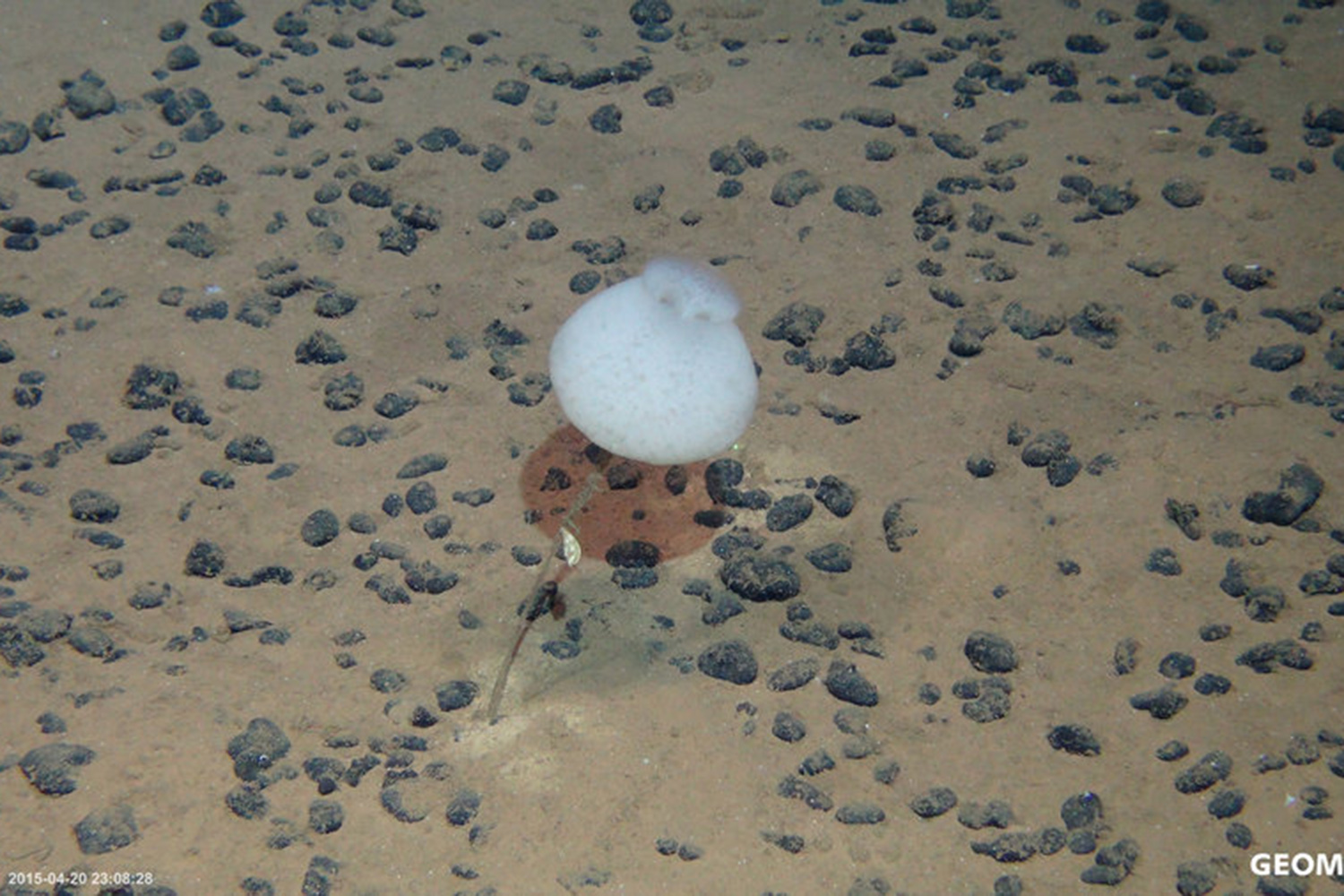Recently, a study published in the international journal Nature has shown that the oxygen content of the global ocean has decreased by two percent in the past 50 years. However, some regions of the world's oceans are affected differently by this development since oxygen is distributed unevenly in the ocean. Ecological and economic consequences are already perceptible in some fish-rich coastal areas.
The decrease of the oxygen content is particularly marked in the eastern tropical and subtropical Pacific. In this region a zone exists in which, due to natural conditions, between 100 and 400 meters of water depth little or no oxygen is present in the water. Measurements in recent years have shown that this oxygen minimum zone (OMZ) is expanding. Today, the German research vessel METEOR is starting on an expedition to the OMZ off Peru from the Chilean port of Valparaiso. It is the first of a total of four cruises with the METEOR to examine the development in the Southeast Pacific. The research is being organized by the Collaborative Research Center (Sonderforschungsbereich, SFB) 754 and the GEOMAR Helmholtz Centre for Ocean Research Kiel.
"One of the main focuses of the first expedition is the measurement of a non-toxic trace substance that we released in October 2015. With the help of this substance, we can understand how water masses, which have been in exchange with the seabed, mix with the OMZ. Ultimately we want to understand the transport routes of oxygen, nutrients and other chemical substances in the water," explains the chief scientist Prof. Dr. Martin Visbeck from GEOMAR. In addition, the team of cruise M135 will take sediment core samples in water depths of 200 to 1500 meters. These will allow insights into the history of the oxygen content, in order to gain information on its future development.
During the second expedition in April (M136, chief scientist: Dr. Marcus Dengler, GEOMAR) and the third in May (M137, chief scientist: Dr. Stefan Sommer, GEOMAR), investigations will be conducted in the waters off the Peruvian port of Callao. On the shelf and on the continental slope the working groups will analyze in detail the exchange of oxygen, nutrients and other trace elements between the water column and the sea floor. For the first time, underwater experiments will be carried out for a better understanding of the seabed ecosystem at different oxygen levels.
The fourth cruise in June 2017 (M138, chief scientist: Prof. Dr. Hermann Bange, GEOMAR) finally will lead from Callao to Balboa on the Panama Canal. On this leg of the cruise, hydrographic, chemical and biological surveys, which have already been carried out on earlier expeditions, will be repeated.. Thus the research will provide information about changes that could not be detected by single measurements.
The coming months will be very busy for the members of the SFB 754, especially for those who are taking part in several legs of the expedition. At the same time, the four consecutive cruises are scientifically a great opportunity. "It is only through the combination of the most diverse measurements that we can understand the context of oxygen decrease in the ocean and its impact on marine life, the chemical changes and the effects on the coastal states," emphasizes Dr. Lothar Stramma of GEOMAR, cruise coordinator of the SFB.
Note:
The Collaborative Research Center 754 (SFB 754) "Climate-Biogeochemical Interactions in the Tropical Ocean" was established in January 2008 as a cooperation between Kiel University, the GEOMAR Helmholtz Centre for Ocean Research Kiel and the Max Planck Institute Bremen. The SFB 754 investigates changes in the oceanic oxygen content, their possible impact on oxygen minimum zones and the consequences on the global interaction of climate and biogeochemistry in the tropical ocean. The SFB 754 is funded by the German Science Foundation (DFG) and is currently in its third phase (2016-2019).
Links:
www.sfb754.de The Collaborative Research Center 754
Contact:
Jan Steffen (GEOMAR, Communication und Media), Tel.: 0431 600 2811, presse@geomar.de
…



